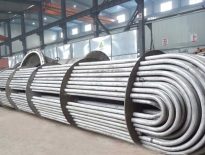Weathering steel is a low carbon steel family that has additional alloying components combined in with the atoms of carbon and iron. These alloying components give weathering steel higher strength and more corrosion resistance than standard low carbon steel grades. As a result, weathering steel is generally utilized in exterior applications or in conditions where normal steel would be prone to rust.
Weathering steel is a specialty steel that produces patina (rust layer) when it comes in contact with the atmosphere for a specific time. Additionally, it needs alternating wet and dry cycles to create a patina coating on weathering steel. In addition, layer generation depends on the area, environmental conditions and many other elements. Thus, it is usually produced in the unpainted form which has a 120-year life span.
Solitaire overseas is a distinguished manufacturer, supplier, and exporter of Corten Steel Pipes manufactured using high-quality raw materials and latest technology keeping in mind the varied industrial needs and globally accepted quality standards.
Types of Weathering Steels
On the basis of type, the weathering steel is segmented as follows
- Corten-A: Corten A is a weatherproof steel which composes alloying copper, chromium and nickel. In addition, Corten A has added phosphorus to make the material ideal choice for gas flue applications and esthetic facias Corten A is not suggested in heavy load applications.
- Corten-B: Corten-B type the preferred choice due to its superior strength and high toughness for use in the structural application. Building & construction is the main weathering steel application particularly in bridge construction. in the last few decade, the use of weathering steel as material for bridge construction has increased. This trend is due to the low maintenance associated with the use of weathering steel, improved corrosion resistance and the structure’s longer shelf life.
- Others (A604, A606, etc.)
On the basis of availability
- Painted: Painting and maintenance will be required if the structure is continually wet as a protective layer will not form. A good example is where the base of the structure meets with the ground or is partially submerged in water, buried in soil or covered by vegetation should be painted and the paint should extend above the level of the water, soil or vegetation.
- Unpainted weathered steel: Unpainted weathering steel is used commonly in places where the steel is not always in contact with water such as railway bridges, containers, sculptures, and others. Some manufacturers offer pre-weathered weathering steel which is also a type of unpainted weathering steel.

